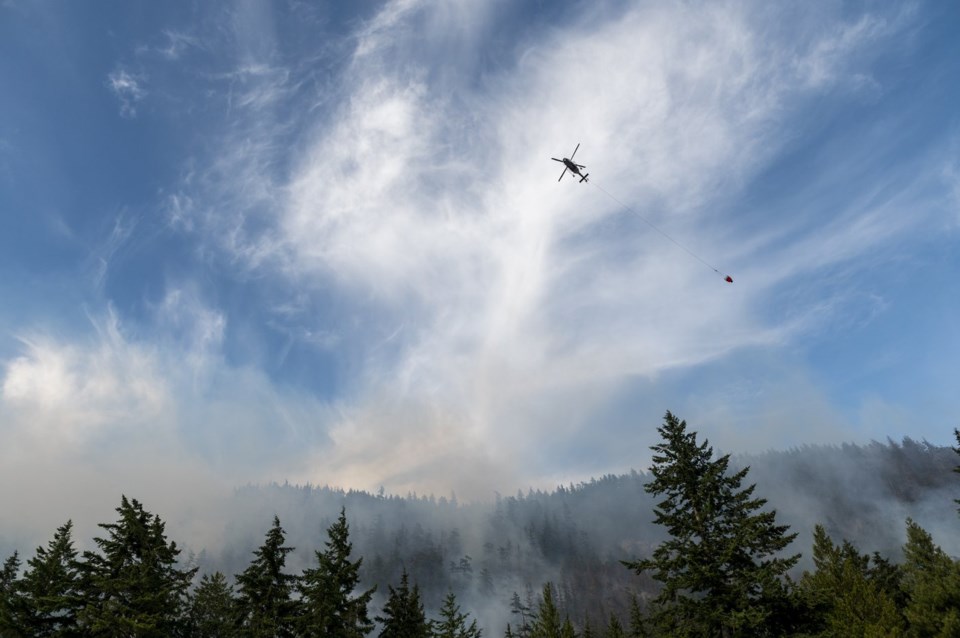Rain in northern British Columbia and cooler weather in the south brought relief for residents living near wildfires with the lifting of evacuation alerts.
The remaining evacuation alerts related to the Pocket Knife Creek wildfire, northwest of Fort. St. John, were rescinded Monday, although the Peace River Regional District says new orders or alerts may be issued if the situation changes.
The BC Wildfire Service says crews were still on the scene in Squamish, B.C., to extinguish hot spots from the Dryden Creek fire, about 60 kilometres north of Vancouver, which was declared to be under control on Saturday.
The progress in the firefight means evacuation alerts for homes closest to the blaze have been lifted with the exception of those along Dryden Road east, while Mayor Armand Hurford says evacuation orders have been issued for two properties due to possible slope instability.
Aircrews continue bucketing operations and the wildfire service says cooler temperatures have allowed crews to tamp down the fire with conditions forecast to remain cool, with rain expected on Wednesday.
BC Parks says Alice Lake Provincial Park will reopen on Tuesday after the wildfire forced the closure because the access road into the park was threatened by fire.
The wildfire service says flames are no longer visible from the Kiskatinaw River fire in the northeast corner of the province, after it was doused with more than 20 millimetres of rain over the weekend.
But BC Wildfire Service fire behaviour analyst Neal McLoughlin said in a video posted Sunday that it "doesn't mean the fire isn't active underground," so crews remain on scene.
The blaze is still rated as out of control, and it is one of three wildfires of note in B.C.
"When we receive this amount of rain on a fire, it's going to take several days of hot, dry conditions before our fuel moisture conditions recover and allow the fire to become active on the surface again," McLoughlin said in the video.
"So, this change in weather has really given us the upper hand for the next week to get ahead of fire suppression activities."
But he said the northeast has been "experiencing several years of drought," and while the rain improves firefighting conditions, the landscape is still receptive to fire.
"Twenty millimetres of rain is wonderful, but we know there's hot spots still within the fire perimeter, and we also know that there's deep underlying drought, and so within a week of drying conditions, we could see active fire on the surface again, and for that reason, we need to maintain active fire suppression over the weeks to come and wrap this fire."
This report by The Canadian Press was first published June 16, 2025.
The Canadian Press



